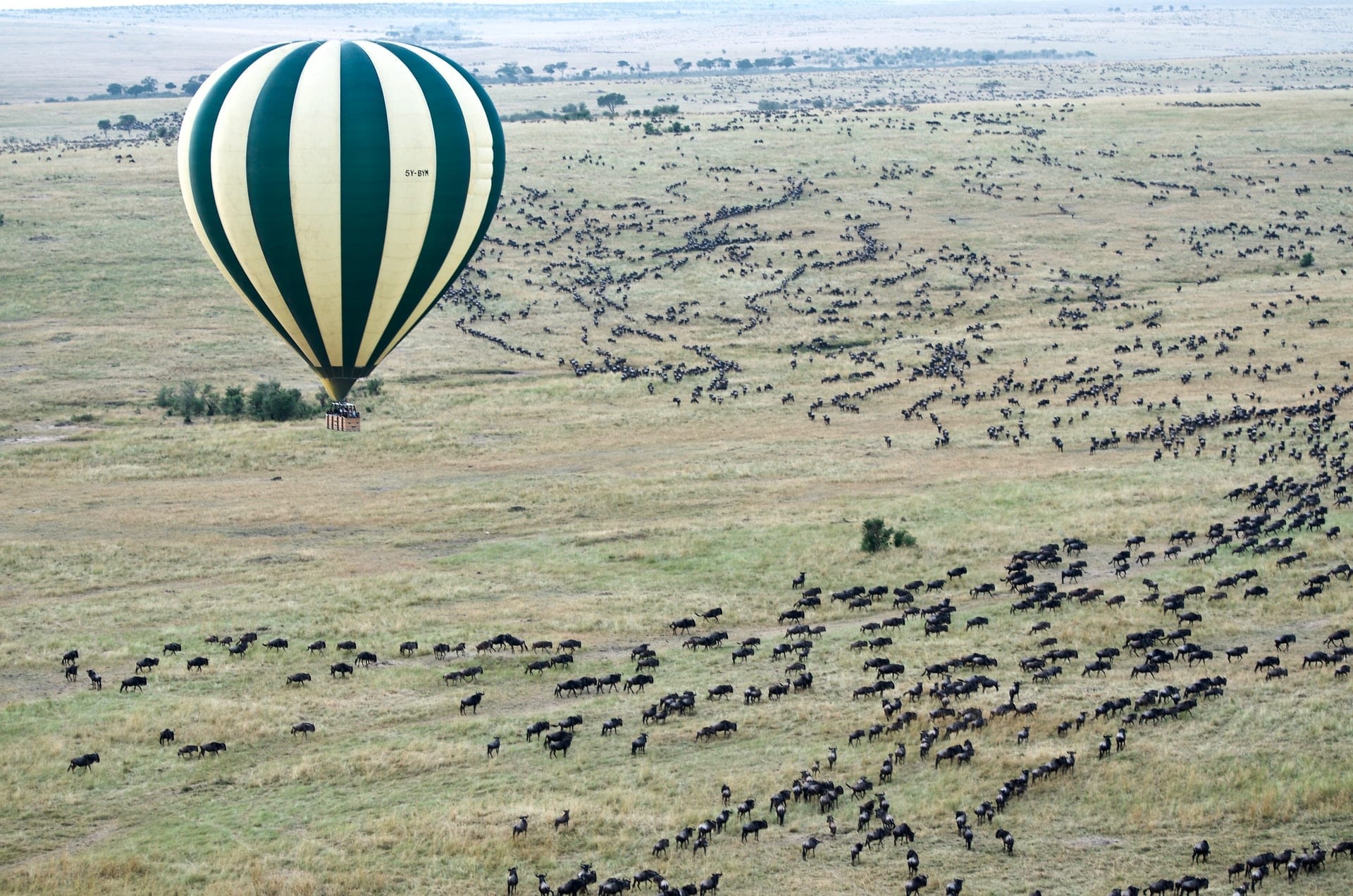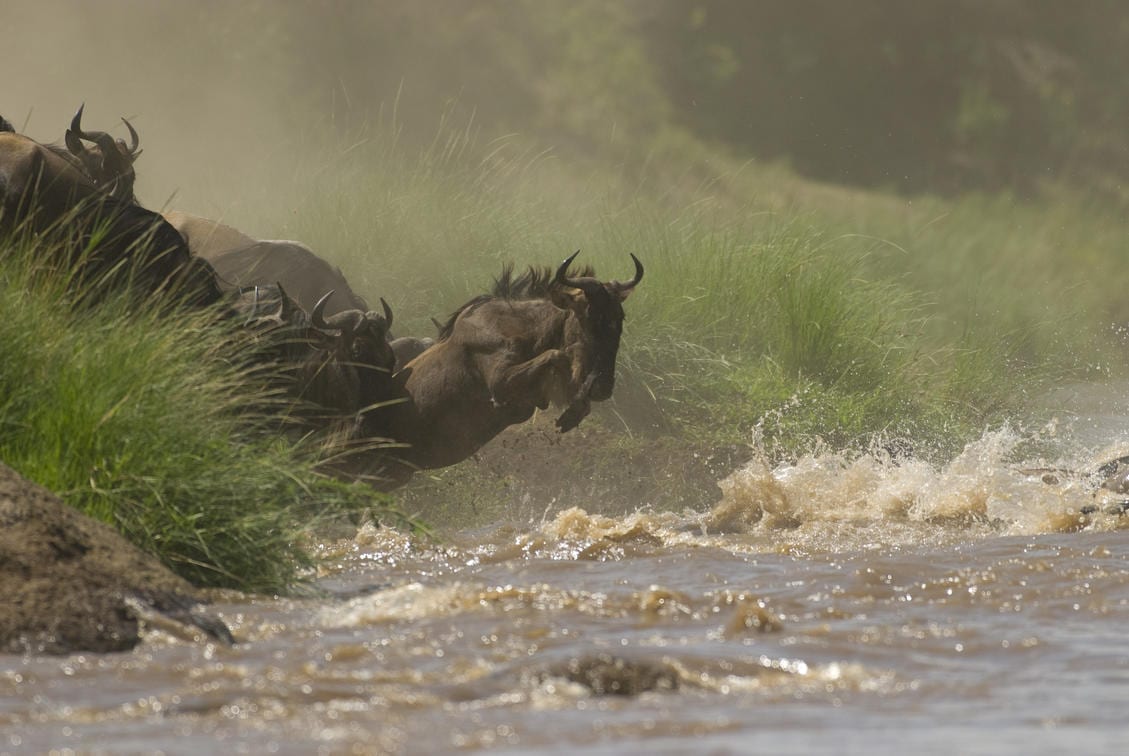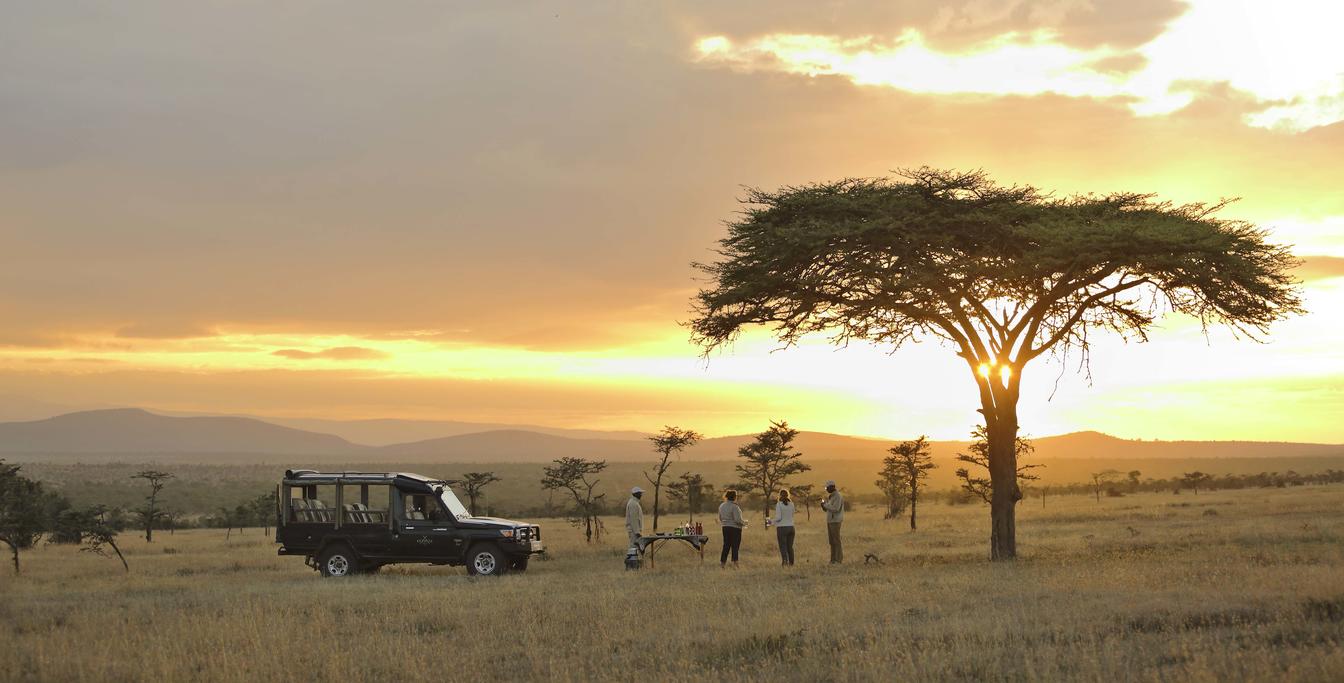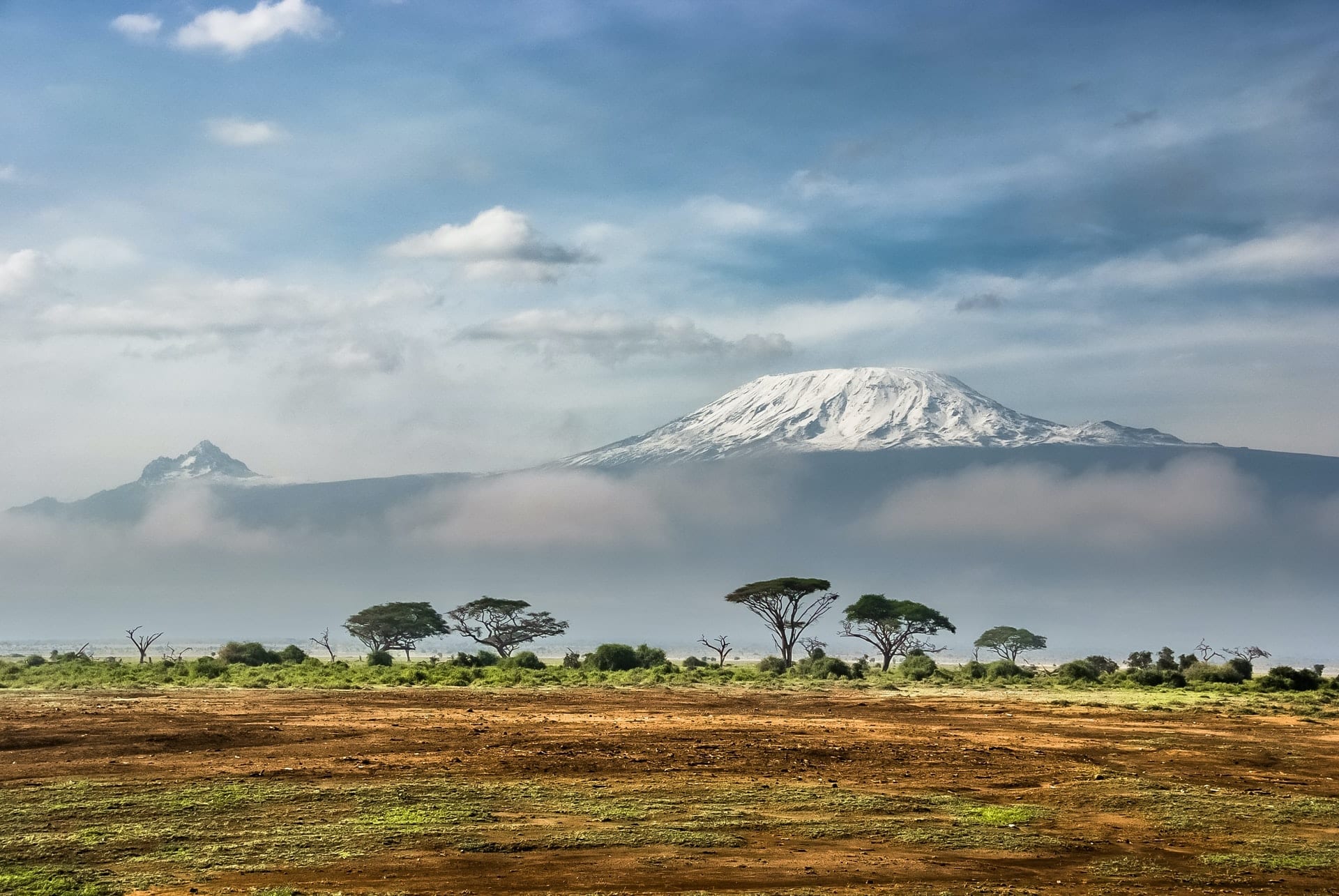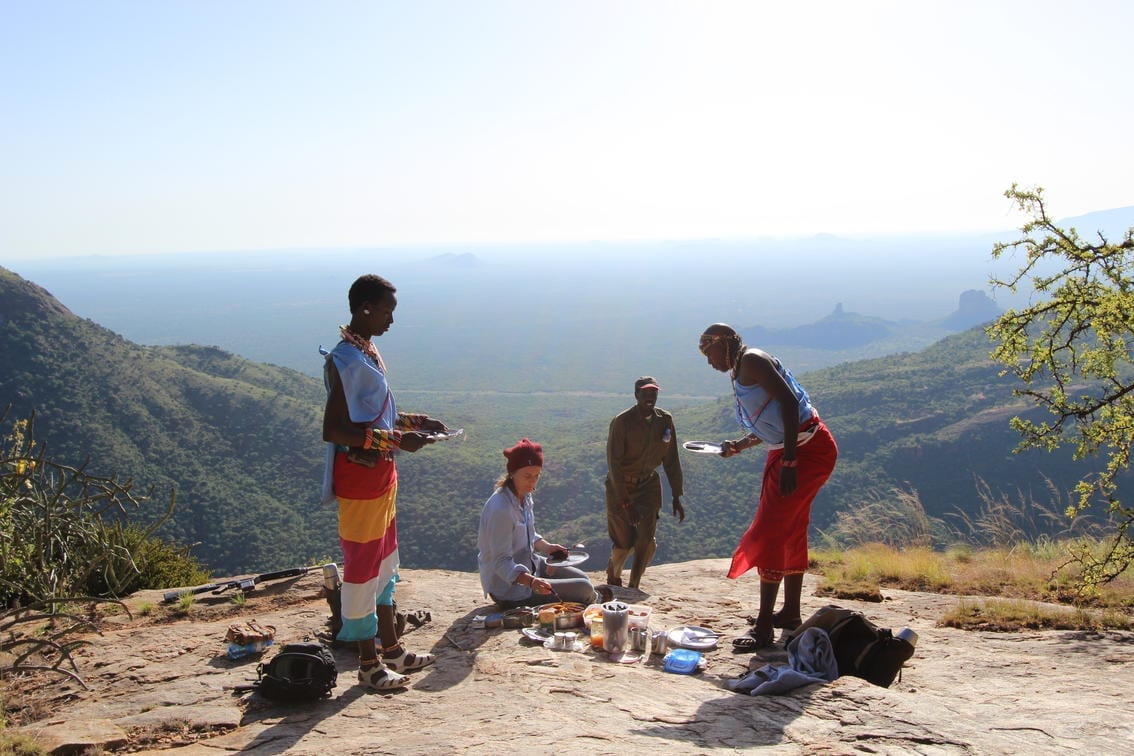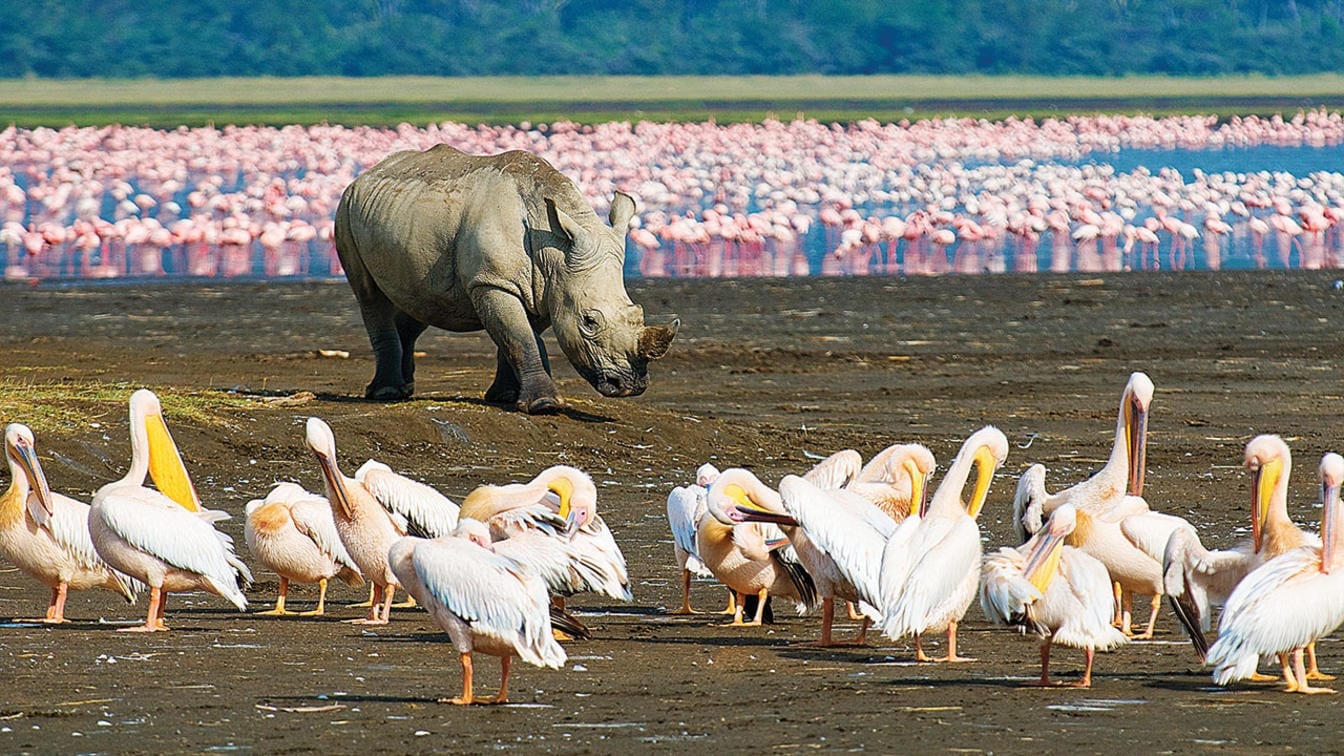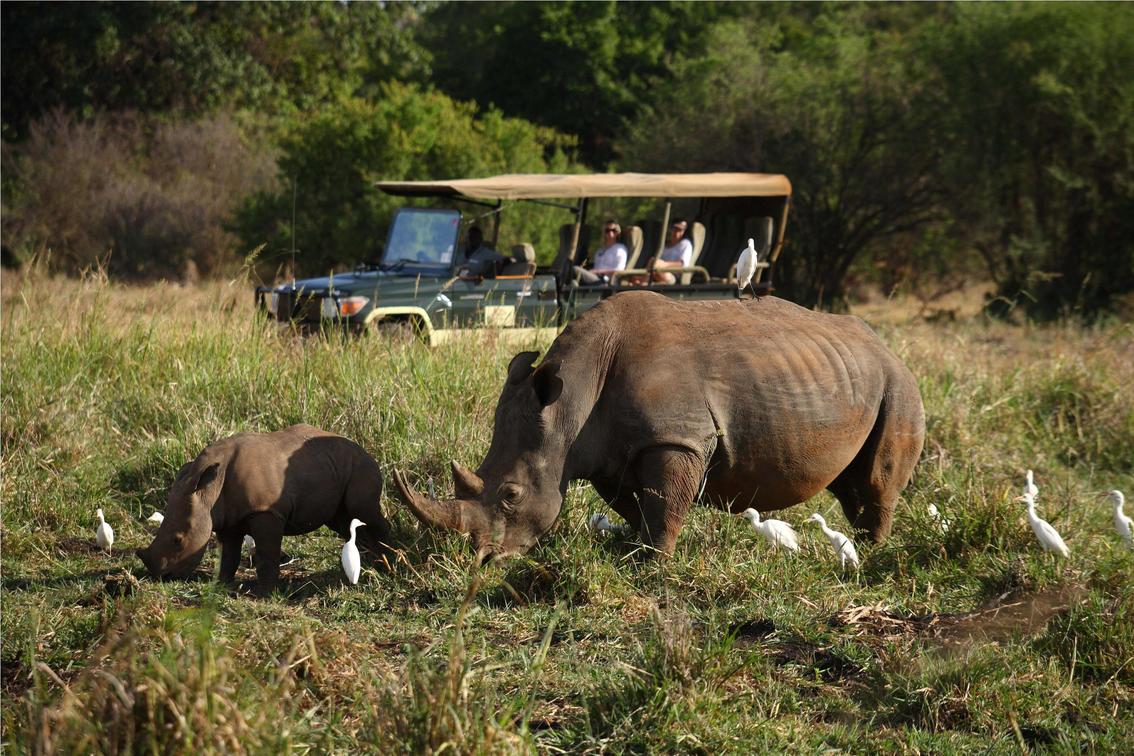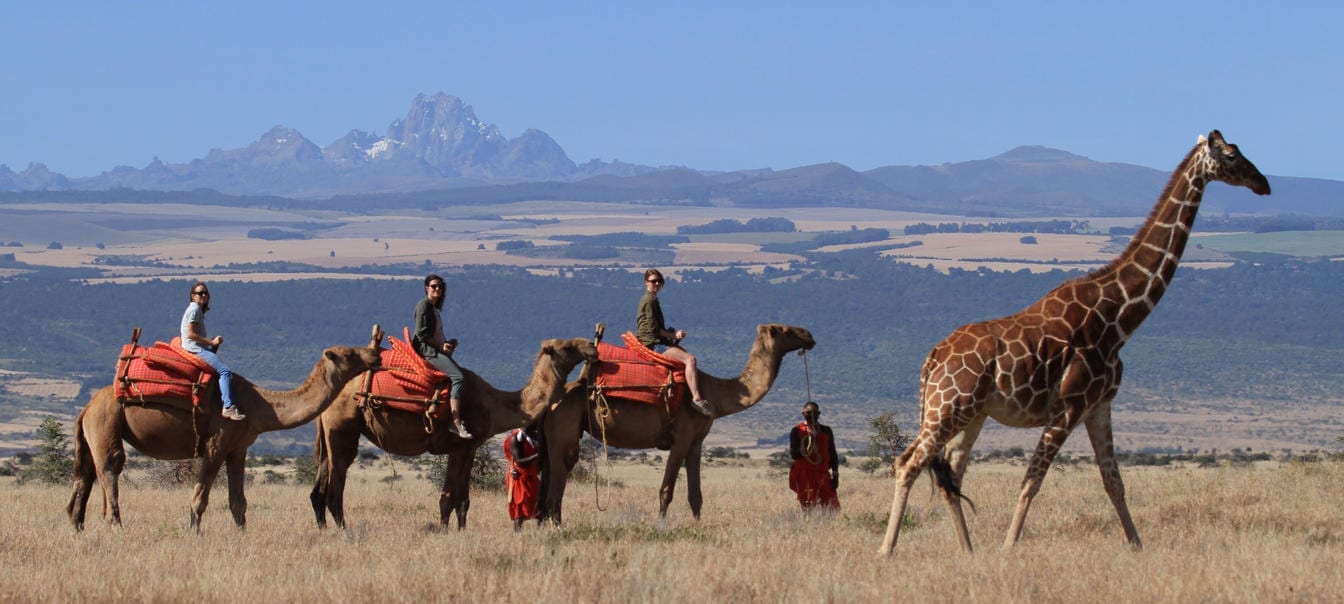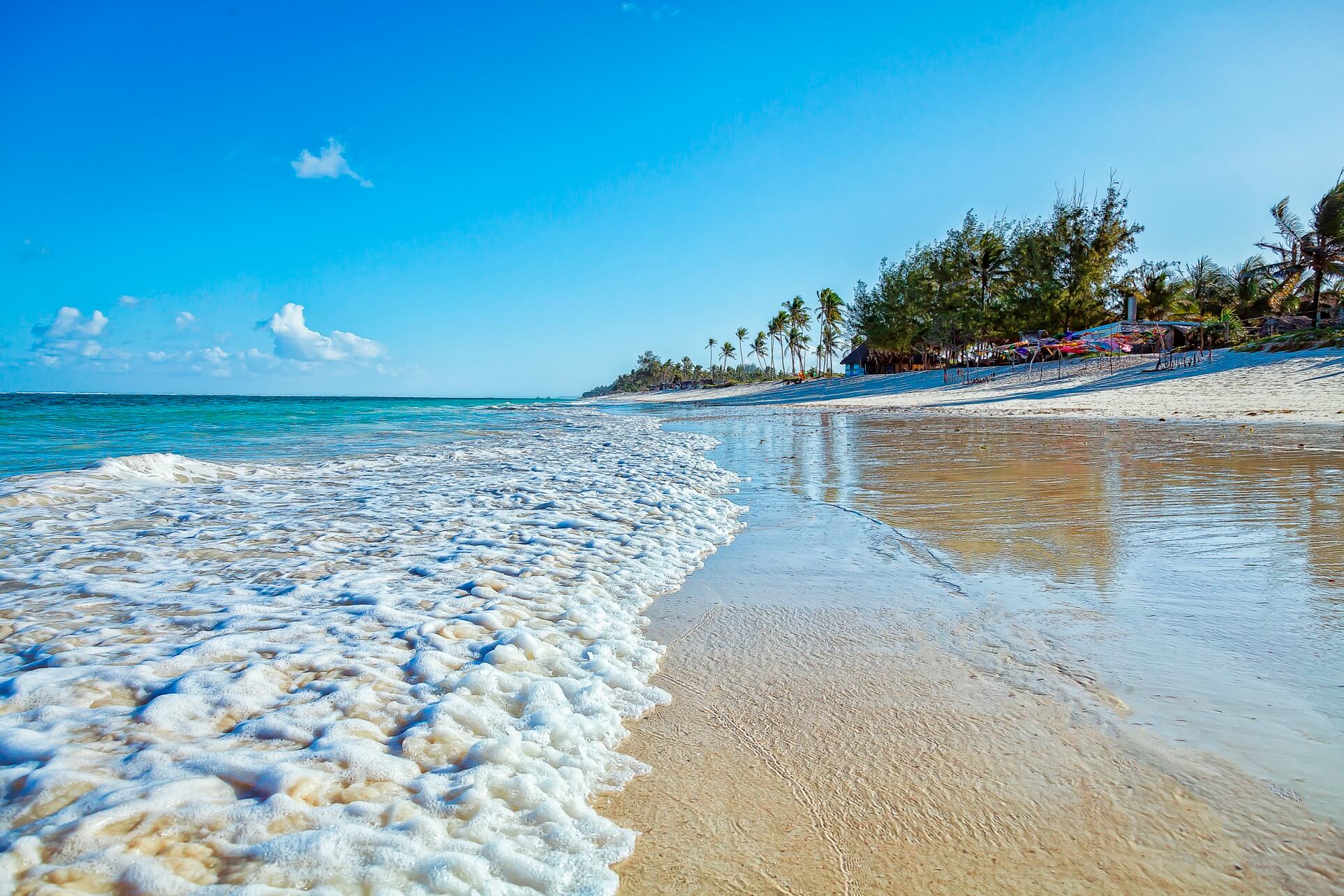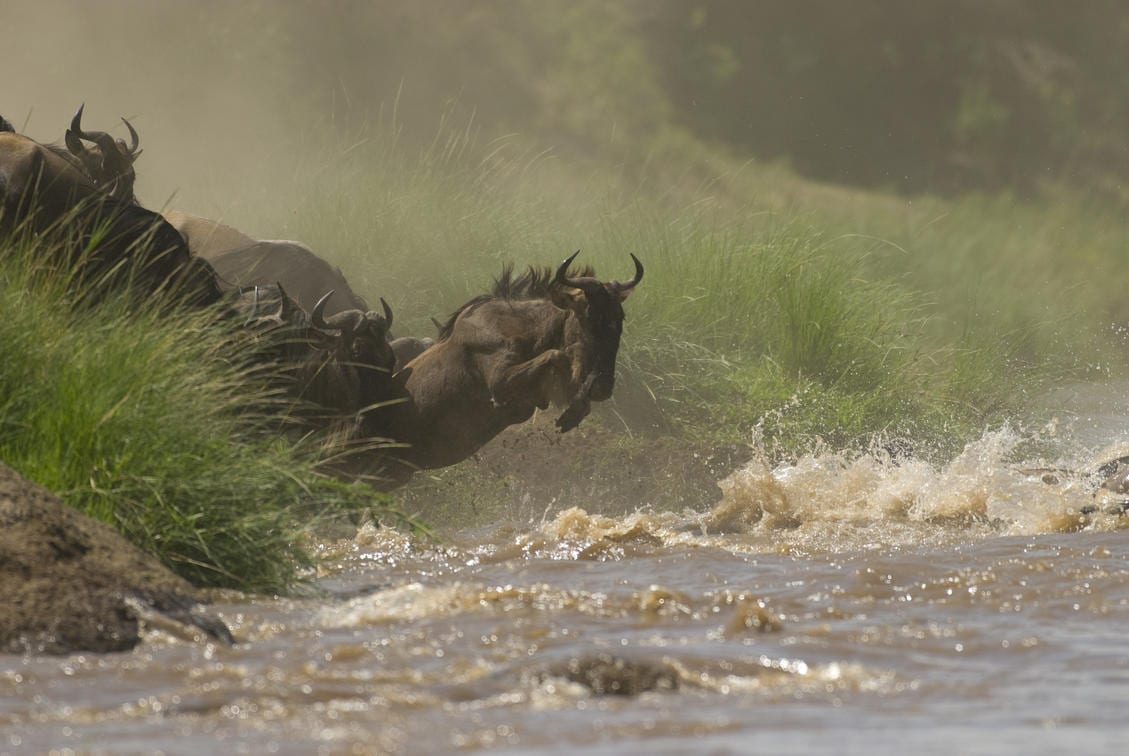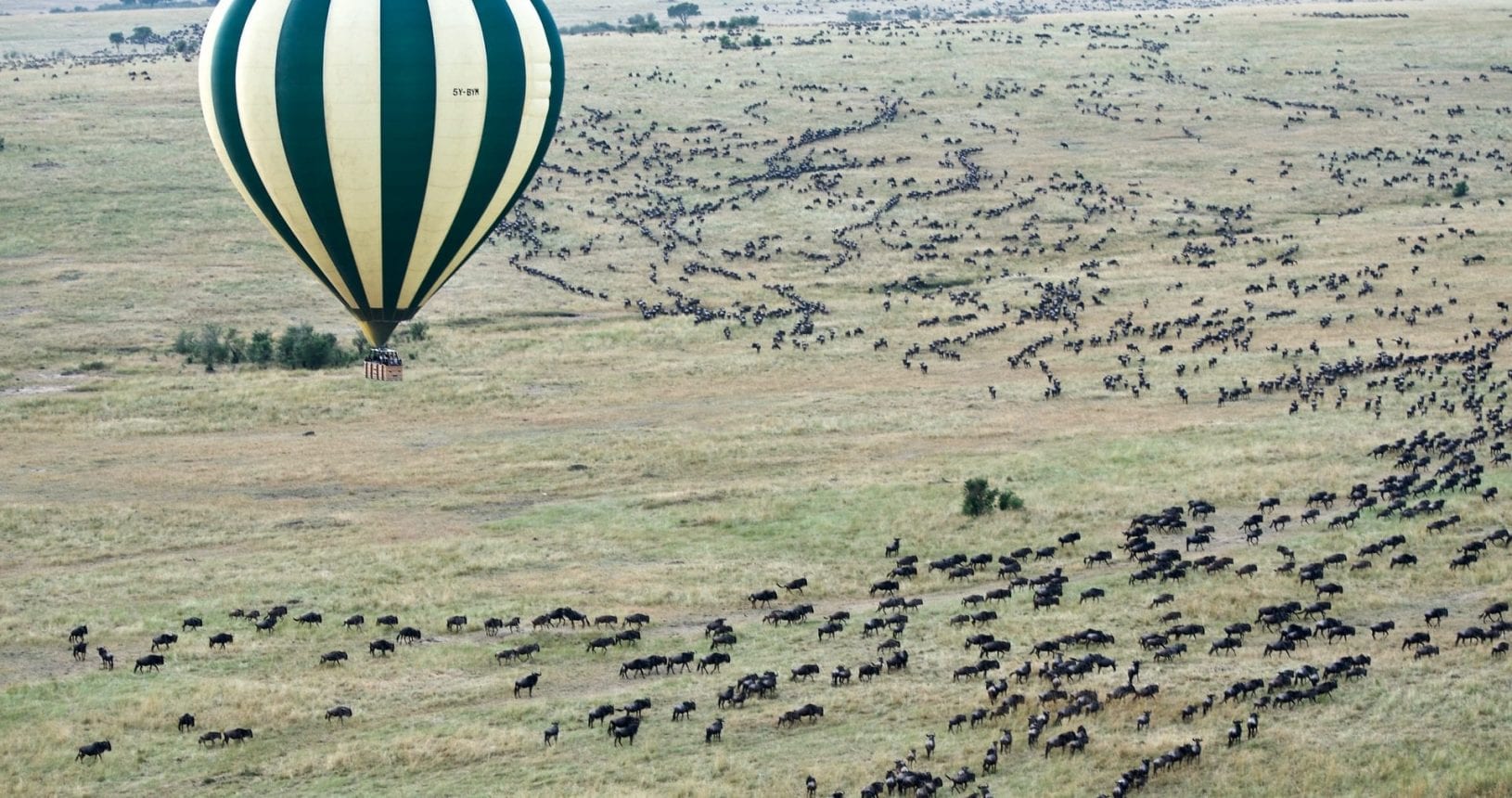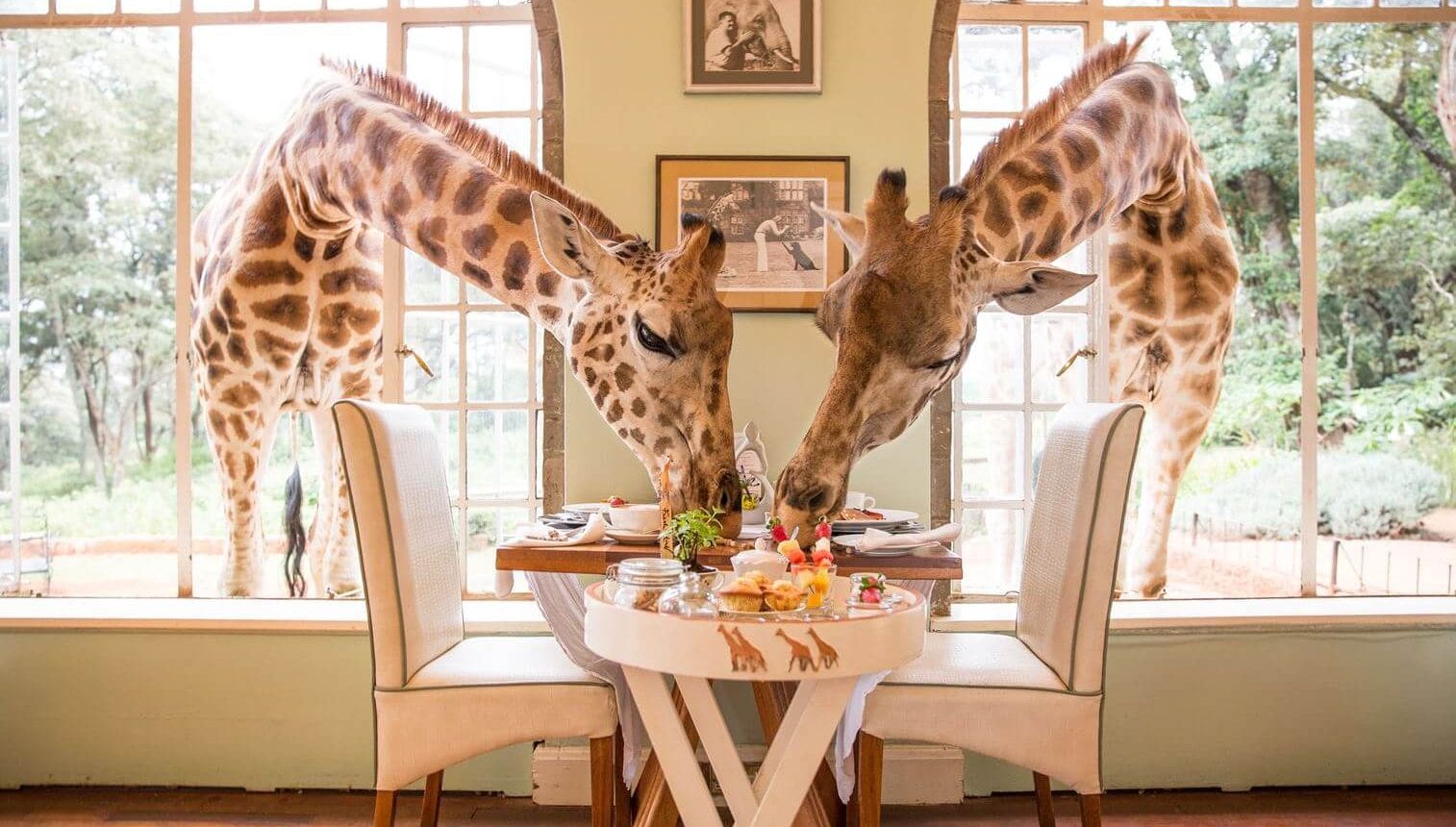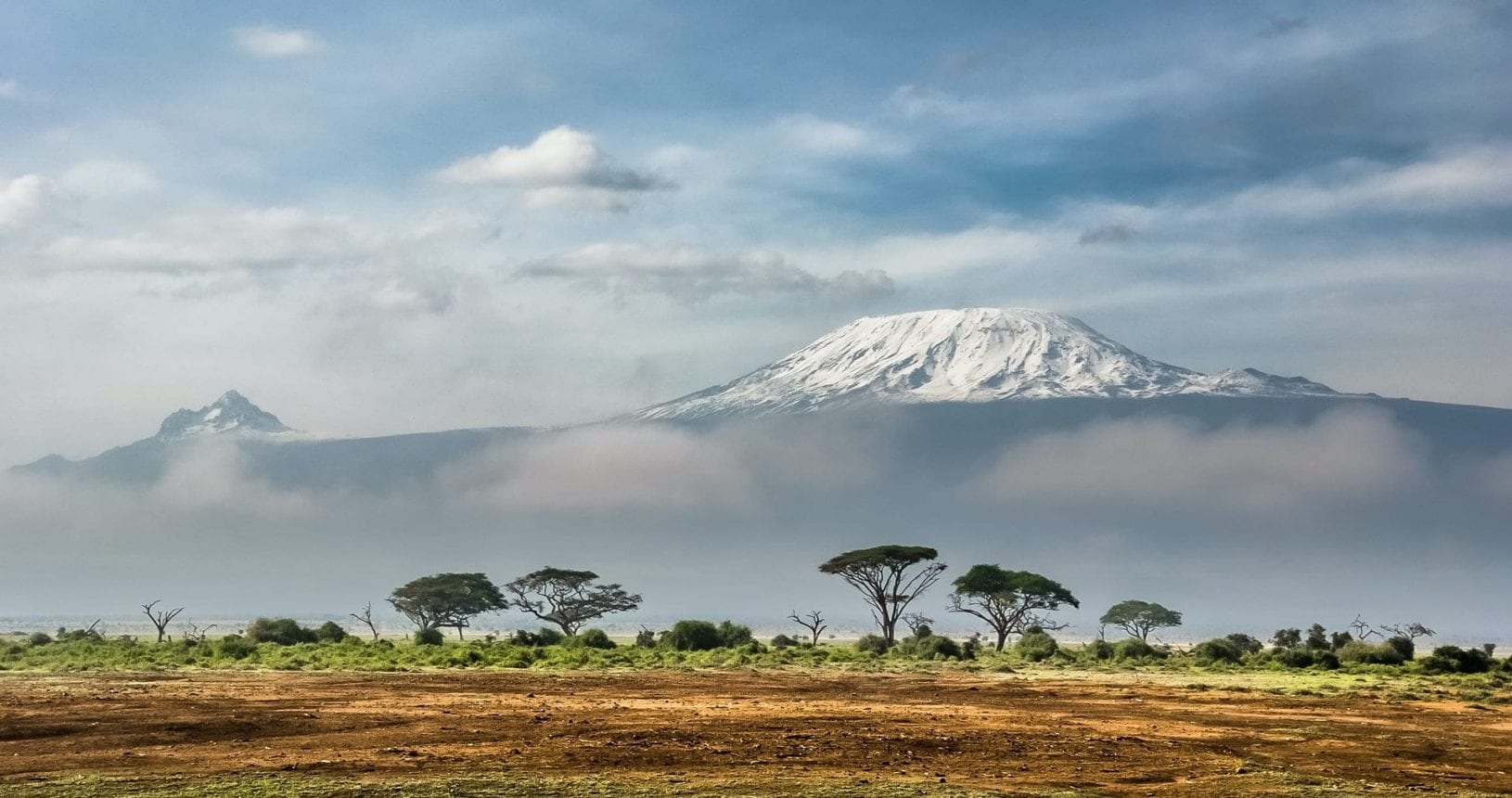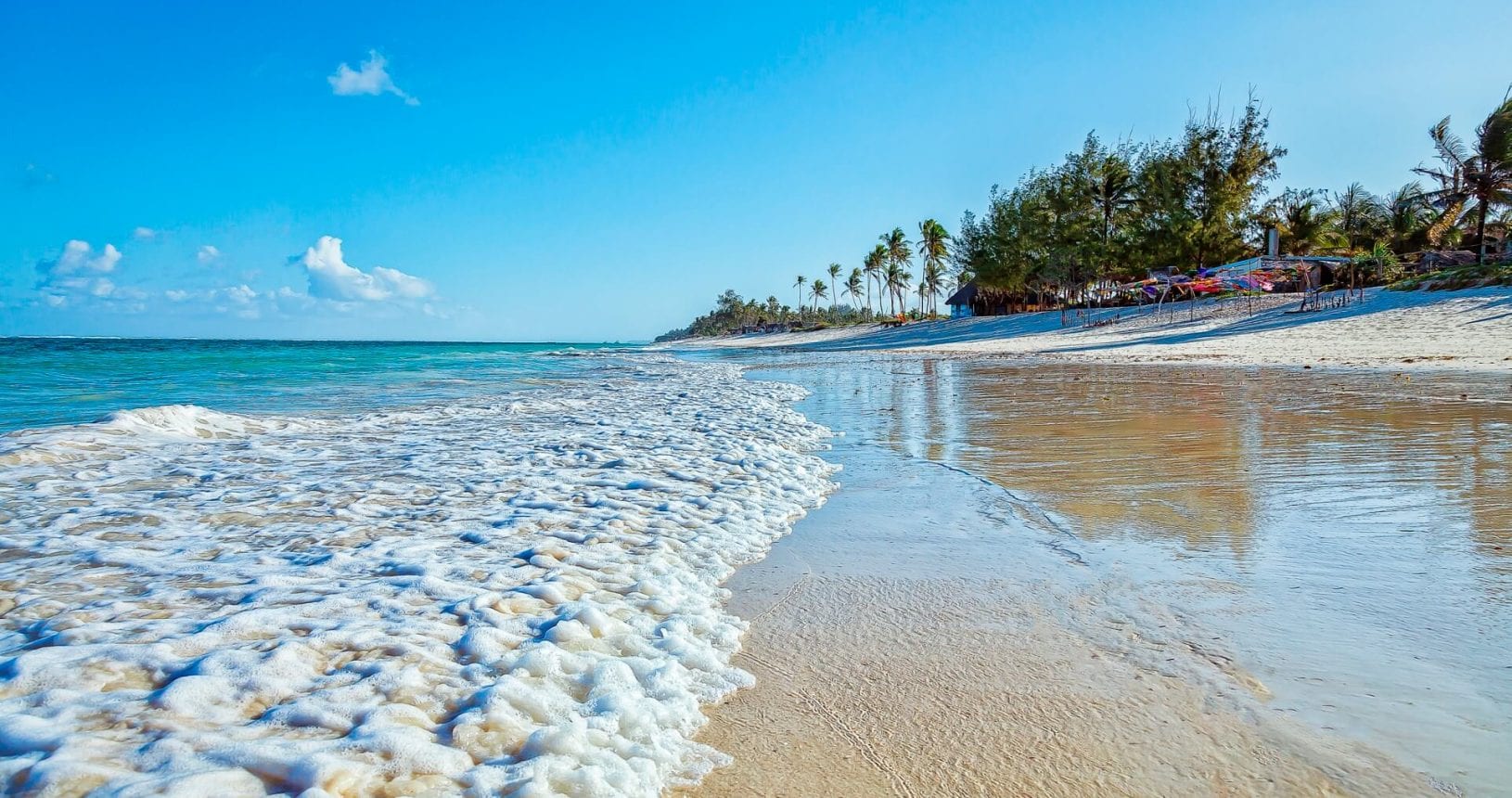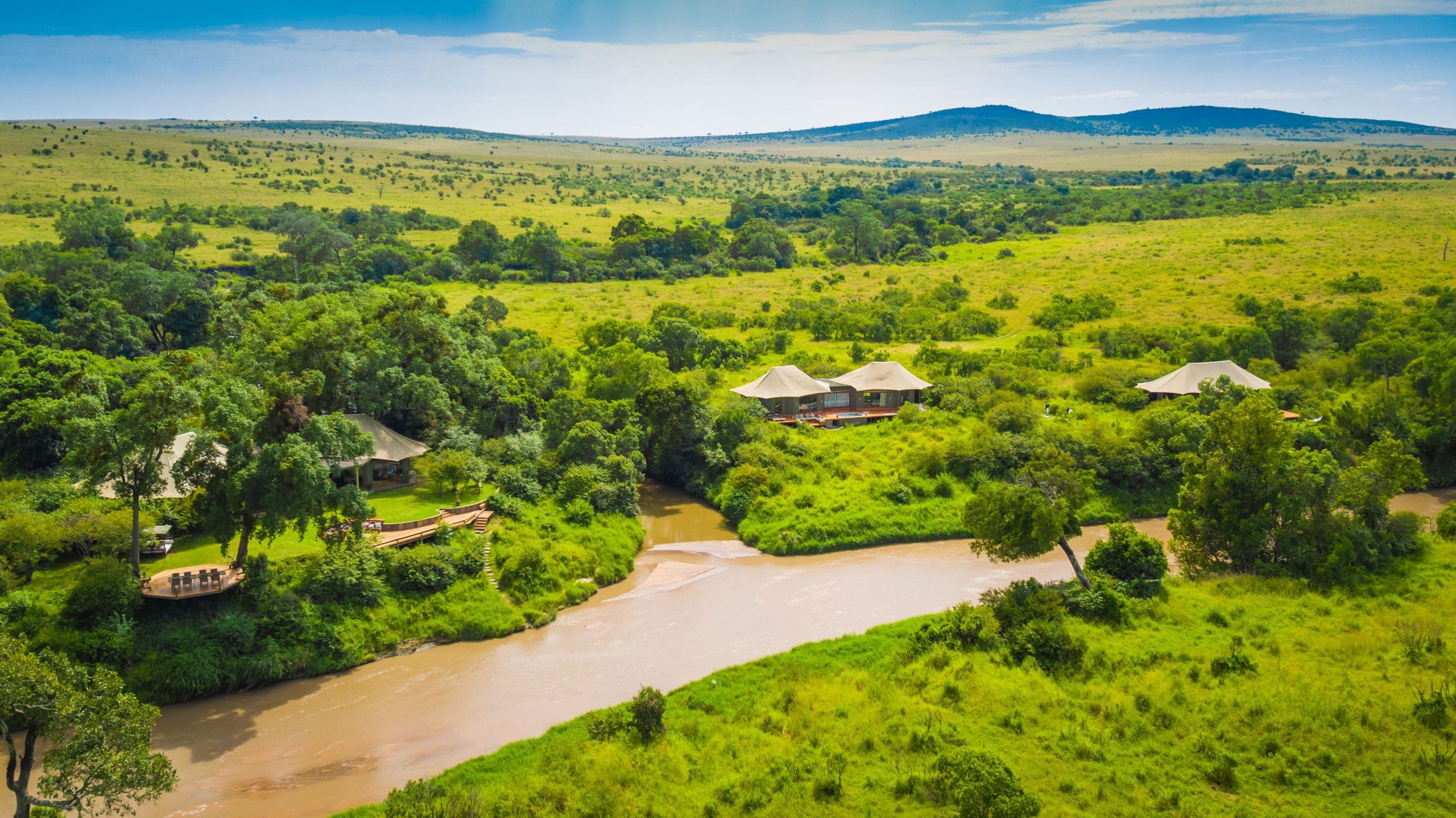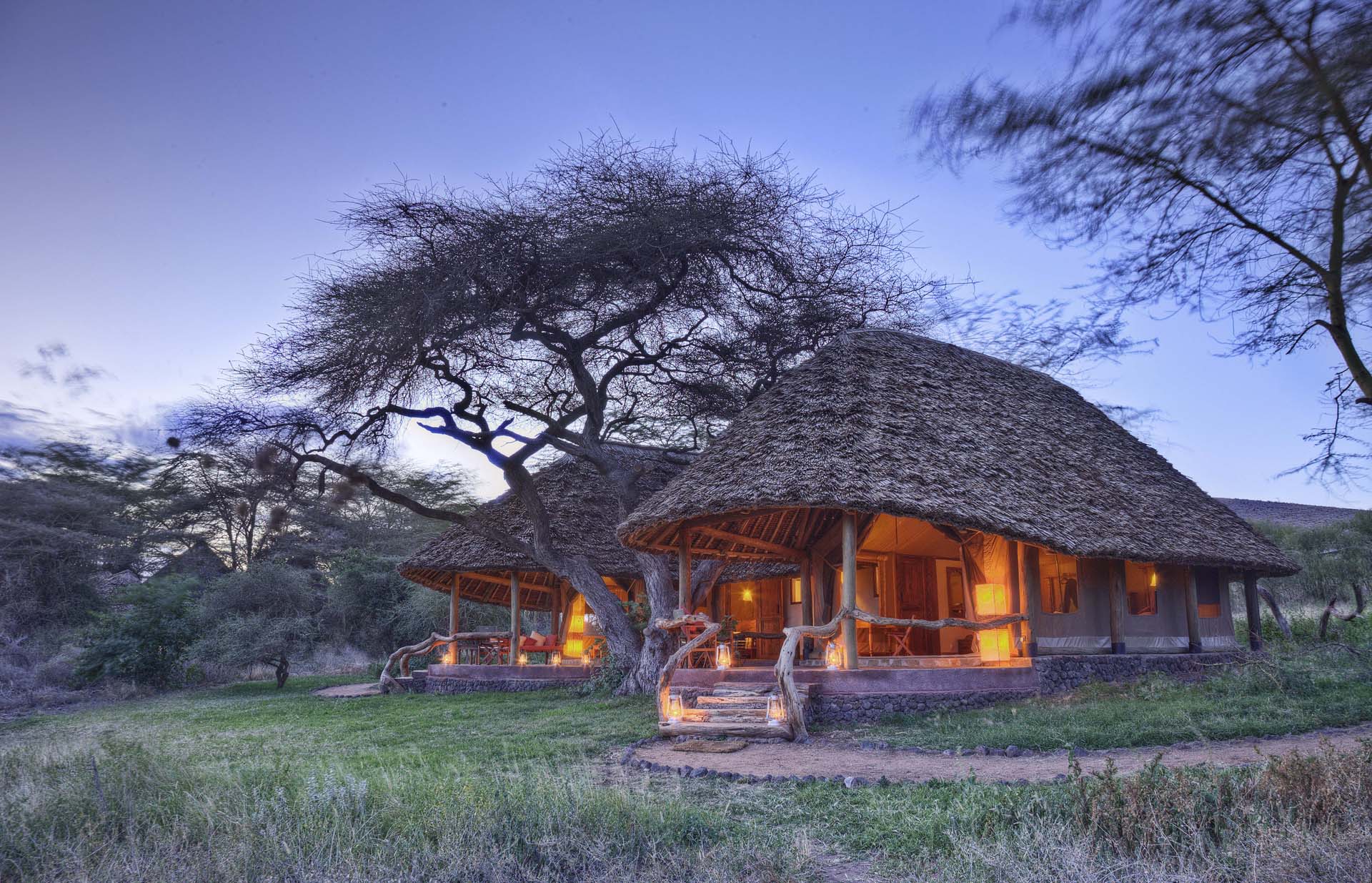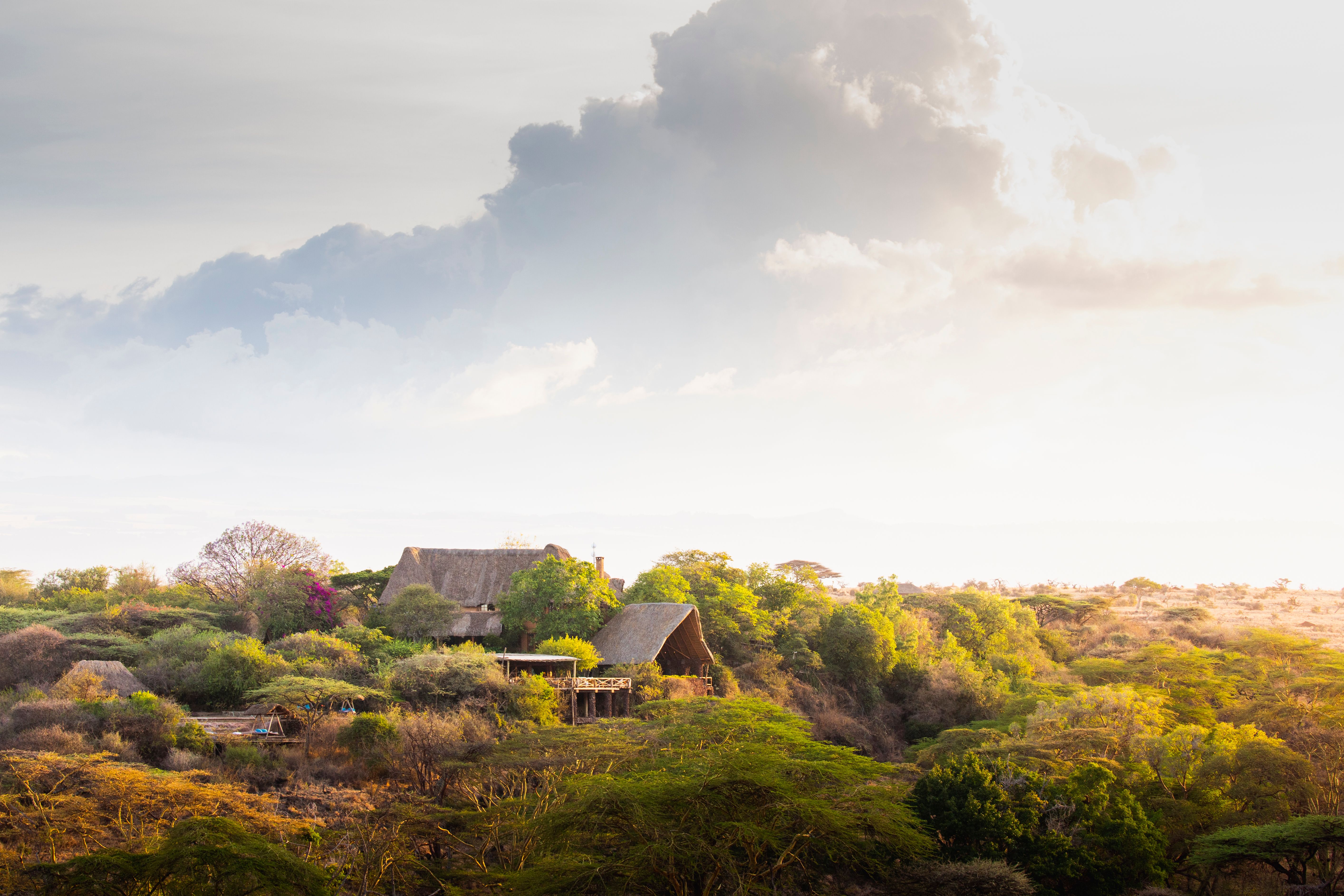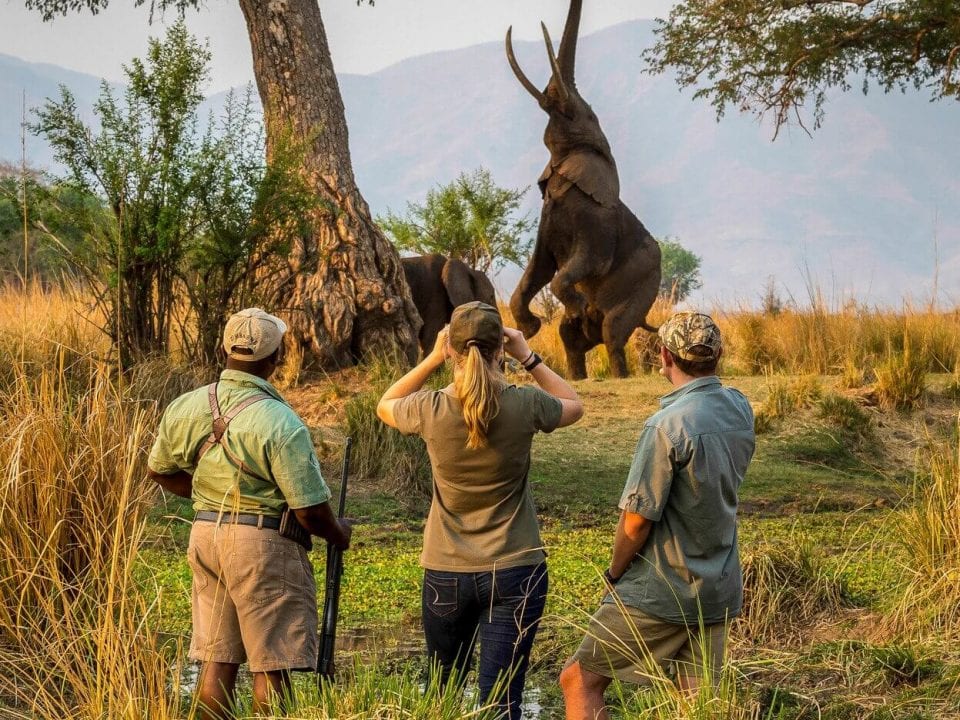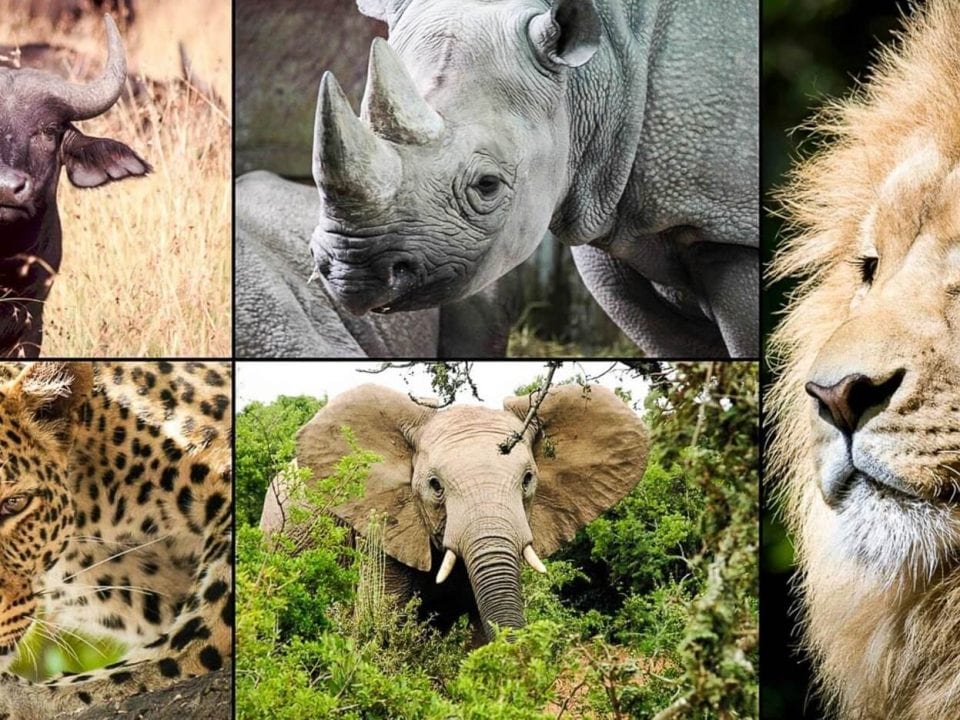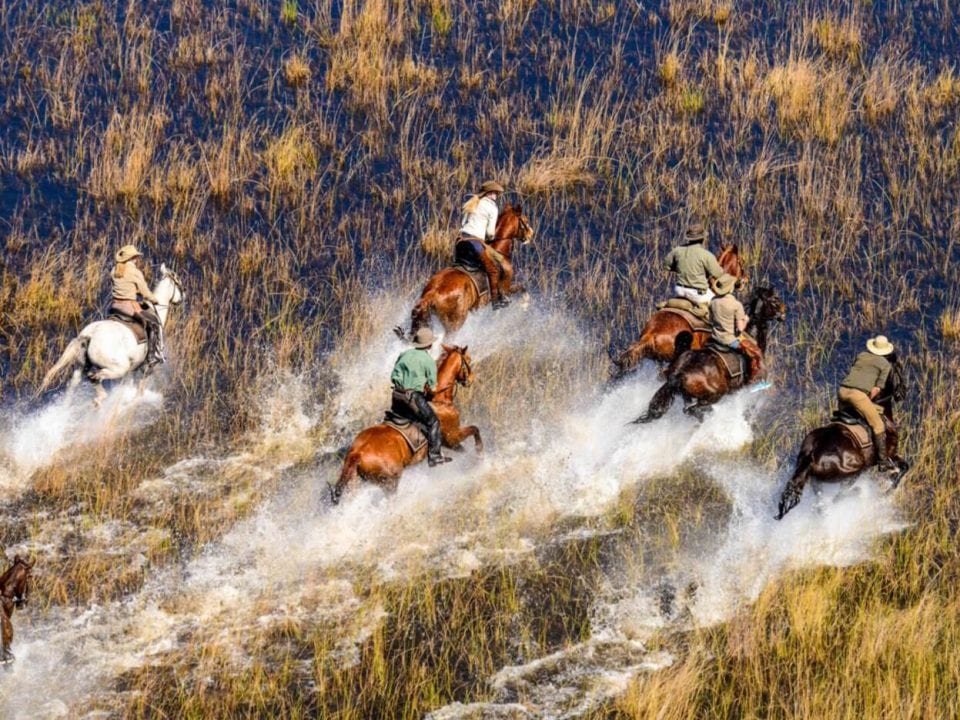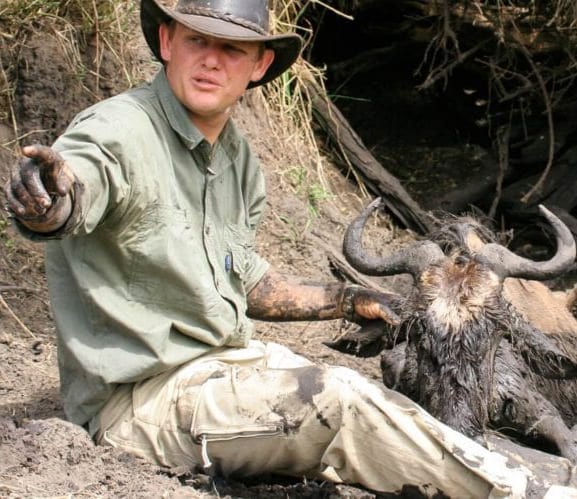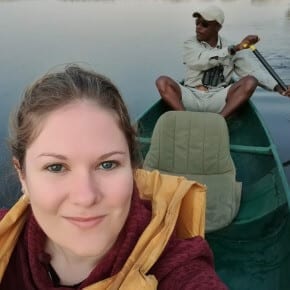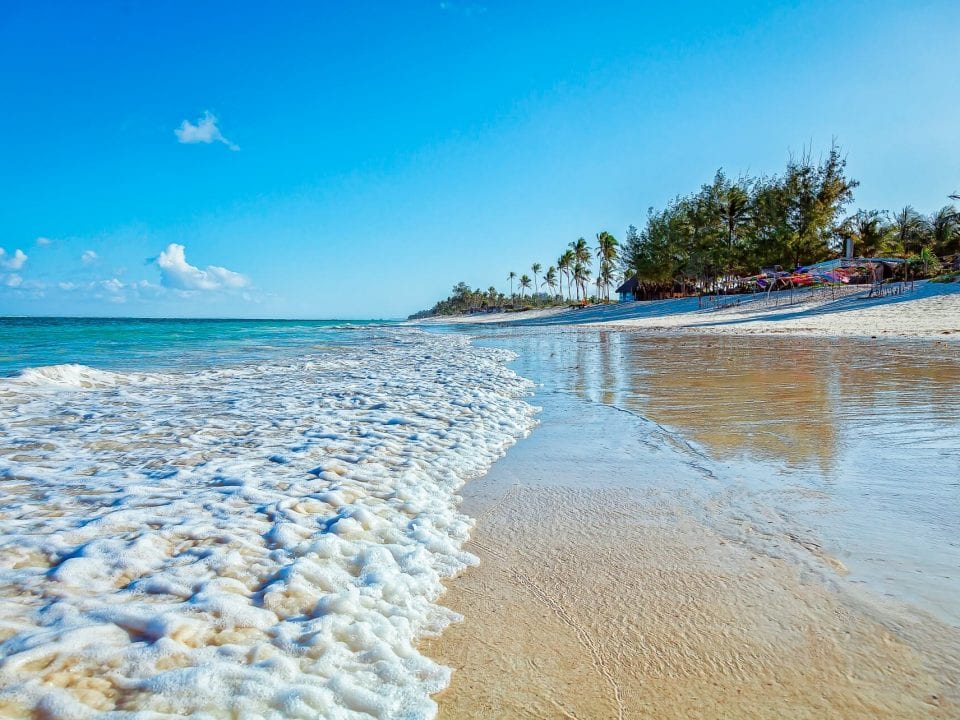Kenya has become something of an institution over the years and is where the lavish and luxurious safari was pioneered and perfected. Today it is a favourite among many safari goers.
It is no surprise then that when tastes shifted toward the photographic safari in the 1950’s and 1960’s, Kenya was again at the forefront. Being spread out over a fairly large landmass means it offers a diversity of different habitats to explore, from endless savannas to snow-capped mountains, from harsh deserts to tropical coastlines.
The crown jewel is without doubt the world-famous Masai Mara reserve. It plays host to the most spectacular portion of the Great Migration, where up to two million wildebeest, zebra and antelope follow the rains in constant search of good grazing. The herds only move through the Mara between July – Nov but their time here is action-packed and chaotic river crossings are the norm. During the rest of the year, however, you will still be rewarded with healthy populations of resident game and much lower visitor numbers. Other safari areas which deserve serious consideration when planning a trip are Meru, Laikipia, Samburu and the Chyulu Hills.
After a rigorous safari schedule, there is no better way to round off your trip than with a week on the tropical beaches that line the coast. Only Kenya and Tanzania offer such an effortless combination of safari and beach. Unfortunately, Malindi has fallen victim to the large resort syndrome but the areas around Lamu still offer that laid-back barefoot atmosphere that most of our clients are hoping for. Even the spectacular Seychelles is easily connected via the main hub of Nairobi.
Kenya Safaris FAQs
With a diverse range of ecosystems including savannah grasslands, mountainous highlands, lake basins and the Great Rift Valley, Kenya boasts some of the most magnificent wildlife in the world with opportunities for amazing game drives. The highlight for most nature enthusiasts will be ticking off the ‘big 5’ (lion, leopard, rhino, buffalo and elephant) – so named because they were the most dangerous to hunt ‘back in the day’. The country has registered over 1,100 bird species so is a true heaven for those keen on our feathered friends, and with roughly 25,000 different animal species you really will be overwhelmed by the amazing wildlife encounters you will have. In addition to the big five, visitors have a good chance of finding other top carnivores such as hyena, jackal and bat-eared fox plus a variety of plains game such as zebra, giraffe, hartebeest, impala, waterbuck and the teeny tiny dik-dik. In the north of the country, you can even find the ‘Samburu Special Five’ including ostrich, oryx, gerenuk, reticulated giraffe and Grevy’s zebra. And, of course, a Kenyan safari would be incomplete without seeing hippos and crocodiles! In short – a trip to this magnificent country will be one FULL of amazing wildlife encounters.
Packing for your African safari is all part of the fun and will get you super excited about the adventures to come. Our travel advice is to layer up your clothes as temperatures between day and night can differ significantly throughout the year, and do try avoiding bright colours for when you’re out and about on walks and game drives. Ensure you remember your day pack which will come in handy particularly for your water, hand sanitizer, camera and those all-important binoculars! Sunglasses and hats are a must. We would also never leave home without a solid pair of walking boots which will protect your toes from sharp acacia thorns. Flip-flops will give your feet a rest in-between activities, and if you’re adding a trip to an Indian Ocean beach resort for some post-safari R&R, don’t forget your swimsuit! Our final super top-tip is to bring a spare jacket for those evenings around the fire. You don’t want to be caught out smelling of smoke!
As a safari destination, Kenya has some of the most wonderful lodges and tented camps for you to stay at. Here at Tailormade Africa we have outstanding relationships with all of the top properties across the country in and around all of the prime game reserves, and there really is something for everyone. For the true adventurer, there really isn’t anything better than sleeping in a luxury tent in the middle of the African bush where you can hear the sounds of the night. If a little more structure is your thing, there are some outstanding lodges which would be better suited, including some with swimming pools and all the spa facilities you could ever need! Location is also vital and that’s where we can really make a difference to your itinerary as we know all the best spots and tailor your trip specifically for you and your loved ones!
You really need a minimum of one week in Kenya in order to really appreciate the people and the country’s natural beauty. We would ideally recommend 10 days to 2 weeks to avoid feeling rushed! Kenya isn’t a self-drive destination so fly in safaris are most common. That one week will be from $4,500 per person sharing, including pretty much everything from the moment you arrive in Nairobi. Here at Tailormade Africa, we specialise in 4* & 5* camps and lodges, all with the highest level of service and experience for a luxury Kenya safari. They are in the main all-inclusive, which means you don’t have to think about that dreaded bill at the end of your stay. You can expect transfers to and from all hotels/lodges, light aircraft flights between locations and all meals and local drinks once on safari. And, of course, a minimum of 2 game drives per day. If you want to include exciting add-ons like hot air balloon safaris, these will bring that price up a tad but they are SO worth it!
The country has an enormous amount to offer travellers and it can be quite confusing to know just where to begin to fully discover Kenya. That’s where we come in! With over 45 years of experience selling travel to this beautiful country, we know exactly what questions to ask you in order to design your perfect Kenyan adventure. The more we know about you and your loved ones, the easier it will be for us to put together the trip of a lifetime, bespoke just for you. If you want absolute exclusivity, we know just where to put you. Fancy a bit of a chat around the fire each night? Great! We have the best spot. Up for some horse-riding, biking and caving? Done! Lake Nakuru and Lake Naivasha to see the flamingos? Easy. All you have to do is reach out and we will do the rest!
Many people would say that the best time to visit Kenya for safari tours are during the Great Migration when the huge herds of wildebeest and zebra make their way from the Serengeti in Tanzania up through to the Masai Mara. Depending on the rains each year, they can be seen in Kenya from August to November. We would however like to highlight that visiting the Mara outside of this period is JUST as fantastic without those enormous herds as the resident game is rich year-round and there will be fewer people! Don’t forget that there are 24 National Parks in the country and so much more to explore, all of which can also be seen throughout the year. The main rainy season is April and May which can make many roads impassable on game drives, however, outside of the long rains you really can’t go wrong with a Kenya safari.
CHOOSE FROM TENSAFARI PARKS & HIGHLIGHTS
Kenya has many amazing areas for you to explore, each with something unique to offer.
Our Top Kenya Lodges & Camps
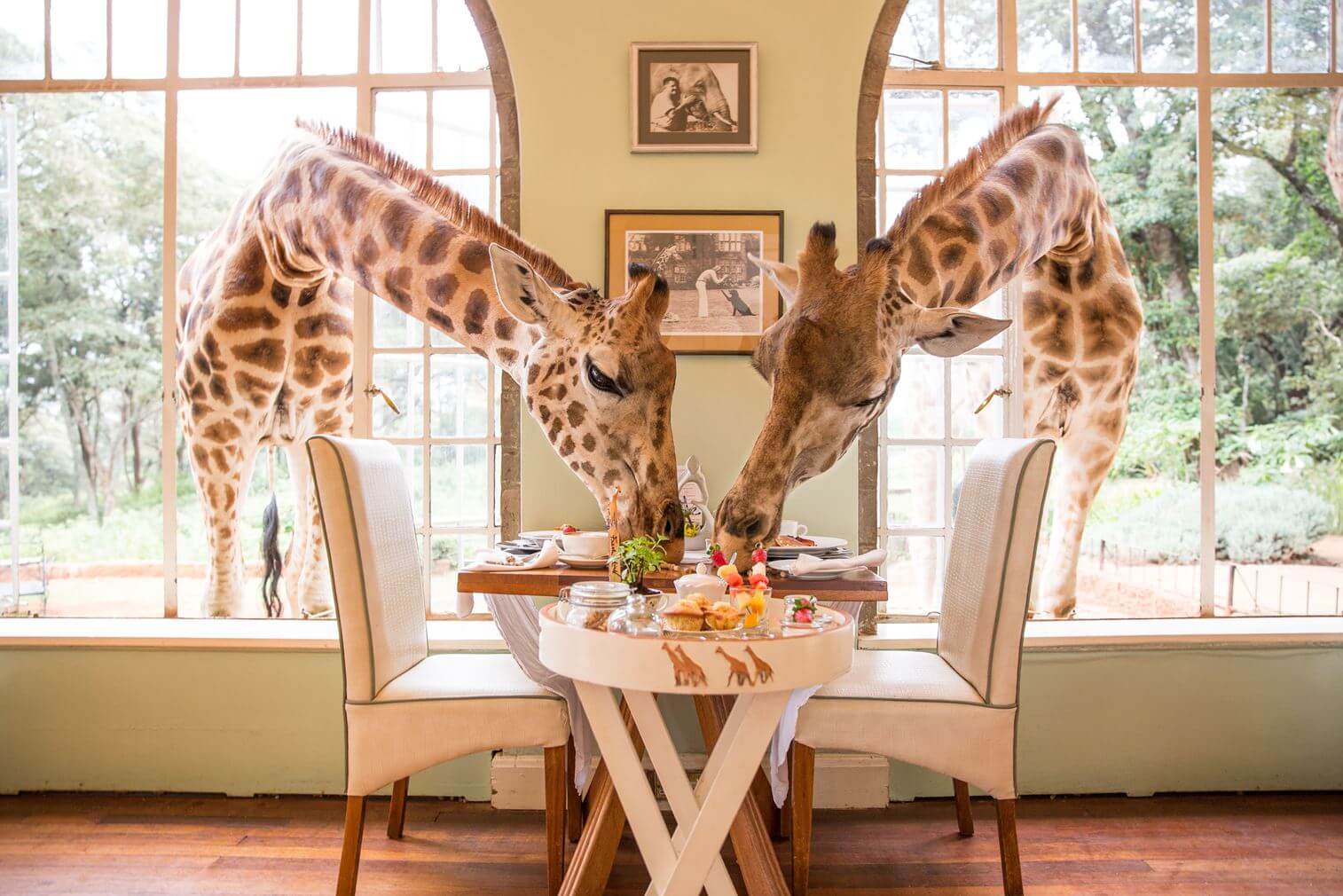
Giraffe Manor is an exclusive boutique hotel, owned by The Safari Collection. Often referred to as one of the most Instagrammed properties in the world, Giraffe Manor is set in 12 acres of private land within 140 acres of indigenous forest ... Read more
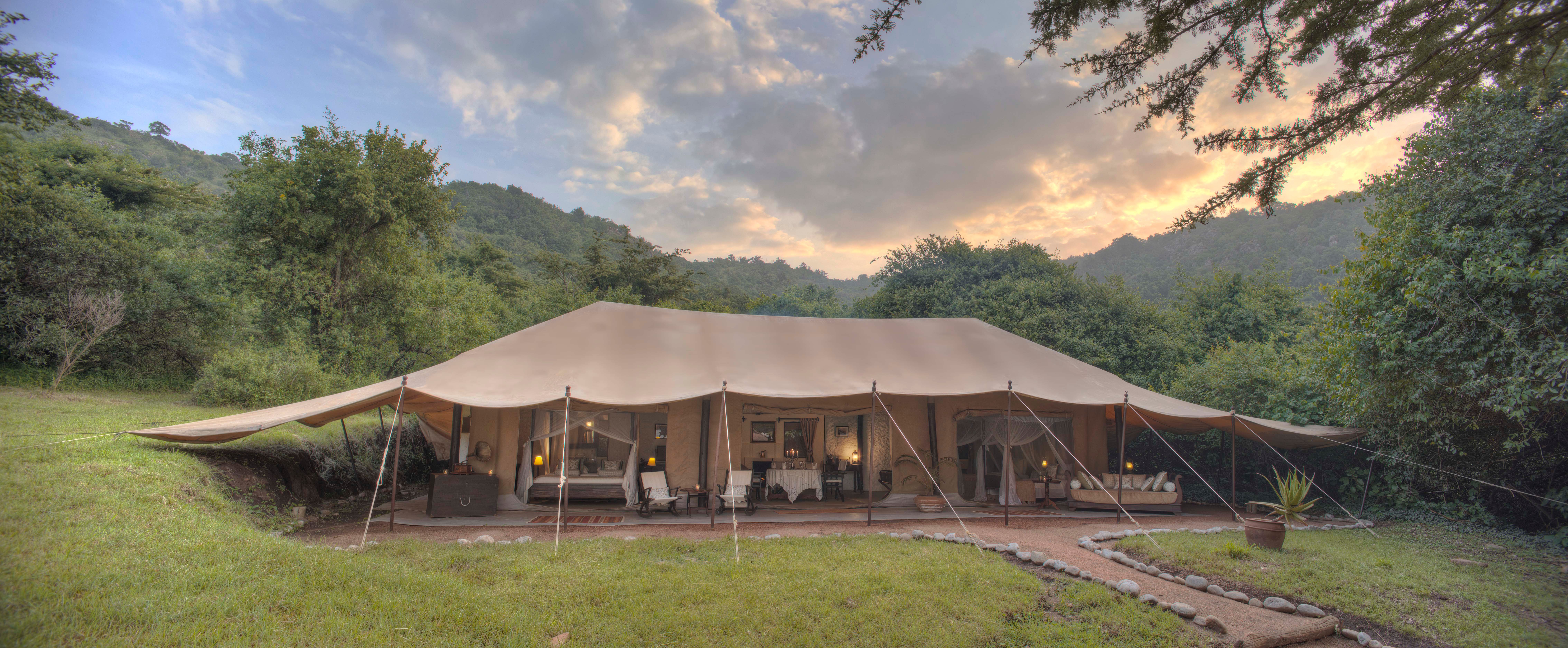
The award-winning Cottars 1920s Safari Camp has its own 7608-acre private conservancy and is situated one kilometre from the famous seventh natural wonder of the world, the Maasai Mara in Kenya ... Read more
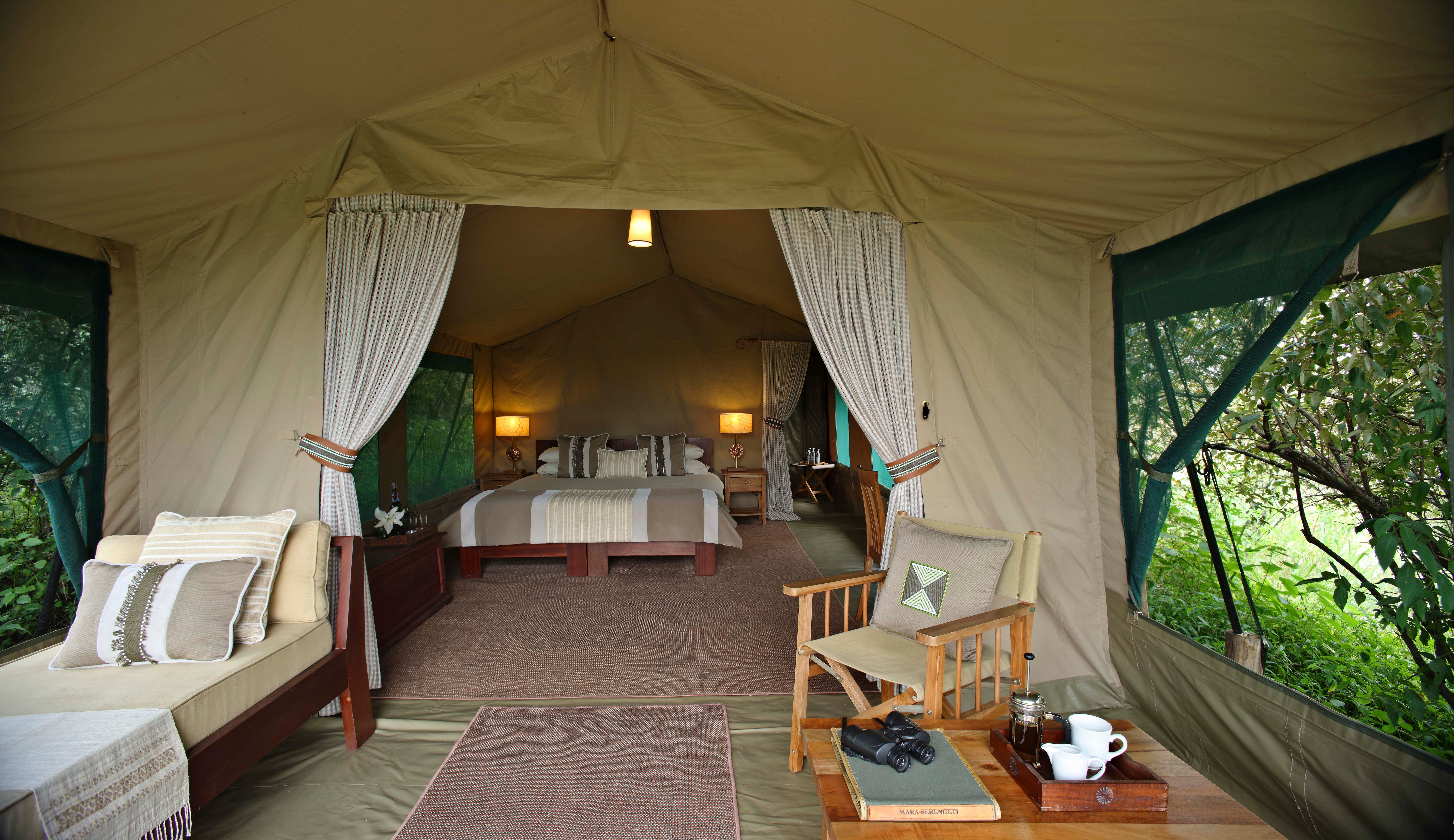
Overlooking the Talek River in the heart of the Masai Mara National Reserve, Rekero sits in a prime position next to the main crossing point used by the wildebeest on their epic annual journey. Contiguous with Tanzania's Serengeti ... Read more
Kenya Safaris Special Offers
Why Tailormade Africa?
Kenya Safari Holidays in Africa
A luxury safari in Kenya means something different for every individual. No matter what your preference, be it to focus on a photographic safari, an unforgettable honeymoon or a family safari, we will ensure that you experience an unforgettable luxury Kenyan safari.
Time, isolation and uniqueness of experience should all be major focal points when considering a luxury safari in Kenya, as all 3 of those elements of luxury have become synonymous with modern safari travel in Kenya.
The main rainy season is April and May which can make many roads impassable on game drives, however outside of the long rains you really can’t go wrong with a Kenya safari.
Many people would say that the best time to visit Kenya for safari tours are during the Great Migration, when the huge herds of wildebeest and zebra make their way from the Serengeti in Tanzania up through to the Masai Mara. Depending on the rains each year, they can be seen in Kenya from August to November.
We would however like to highlight that visiting the Mara outside of this period is JUST as fantastic without those enormous herds as the resident game is rich year-round and there will be fewer people! Don’t forget that there are 24 National Parks in the country and so much more to explore, all of which can also be seen throughout the year.
Book Your Kenya Safari Today!
We create bespoke Kenya safari holidays for travellers from all over the world. Unlike most safari operators, we specialise in bespoke trips based on a combination of your desires and our team’s expertise. We’ve travelled all of Africa, and know from experience how to craft the best safari experience for you. Contact Rob or Clyde today to start planning your next adventure in Africa!




